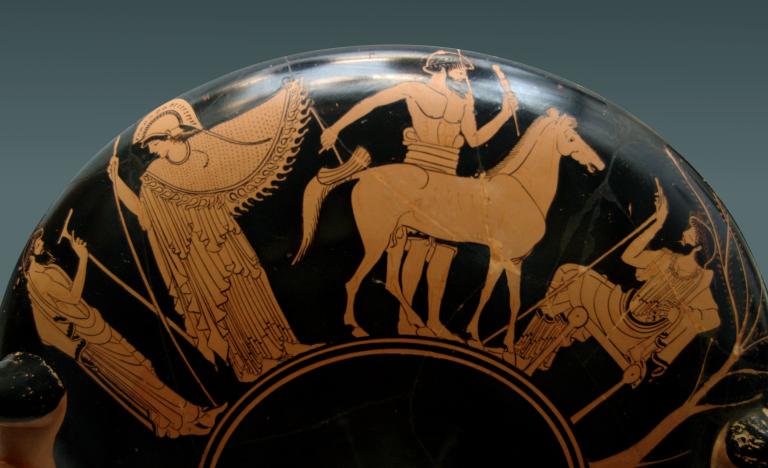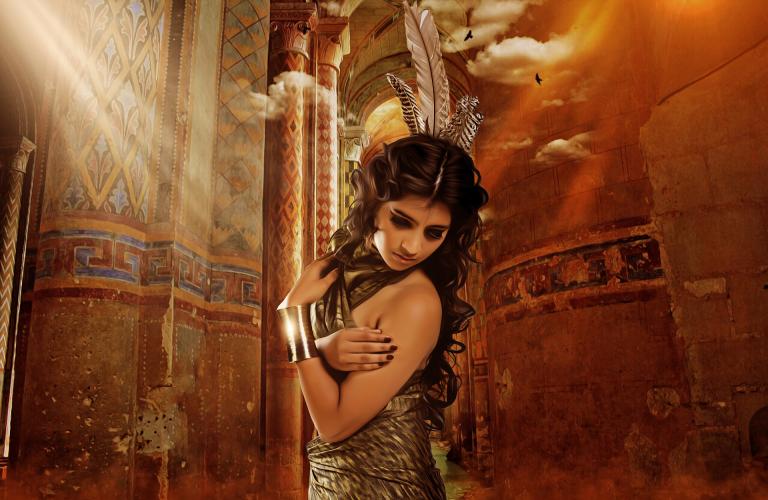All right, so I’m tired, brain-dead and my uterus is sucking away all of the oxygen that would normally be diverted to my frontal lobe. As a result, I’ve decided that it’s a good time to talk about truth, orthodoxy, faith and the authority of the Church. As like, probably part of an intricate five to ten part series. Because, ummm… probably I’m deranged?
Or perhaps more importantly because I kind of want to deal with it in a way that’s honest and personal, because that’s how truth is for me. It’s not a series of abstractions, an intellectual construct, a brilliant pile of syllogisms or a set of authoritative texts. I’ve only ever been able to really relate to truth on the level of lived experience, which is probably why I’m so attracted to a religious system in which Truth is conceptualized not as a series of abstract Forms, an impersonal Ideal, or an indifferent Nature, but as a Person.
The ultimate goal here is to set out a kind of road-map for something that might be called Catholic Scepticism, Postmodern Catholicism, or – as my blog is titled – Catholic Authenticity. I just want to note here that by this title I do not mean “Authentic Catholicism.” I do not imagine that my Catholicism sets some kind of benchmark for authentic expression of the faith. Rather, what I’m attempting is to live out a Catholic identity within an existentialist framework of authenticity. Perhaps this is a doomed enterprise, but as my philosophical experiments have gone it’s been by far the most successful.
Alright, so a little bit of background is in order. I want to start by talking about methodology: that is, how do I personally go about the business of trying to discover truth, and why?
To begin with, I believe that all human hearts are fundamentally ordered towards their Divine origin, but I don’t think that this innate orientation always manifests itself in the same way. There’s a theory, which I find basically convincing, that different people respond to different degrees to the three Platonic transcendentals: Truth, Goodness and Beauty. Everyone is ultimately drawn towards all three, but generally most people will have one that is primary and they will approach the other two through it.
So, for some people truth is primary. They just have a deeply felt conviction that truth is really important in and of itself. I’m assuming that these are the folks who get something out of analytic philosophy. To such a person, calling truth into question, or debating the value of reason, is basically nonsensical. Truth is true. What else could it be? For a person who thinks this way, the value of goodness is often vouchsafed through moral philosophy, and beauty is often justified through the study of aesthetics.
For another person, goodness may be the most fundamental value. For this type of person, immediate moral activity forms the basis of their approach to God. Generally, these are practical individuals who don’t have a lot of patience with abstract truth – or, for that matter, a lot of interest in abstract art. For them, truth is understood in terms of concrete goods that they can observe in the lives of those they serve and care for. Beauty is valued insofar as it warms the heart and illuminates the triumph of human goodness.
Finally, there are people like me. Why am I interested in philosophy? Simply, because at the tender age of 15 I read Ode to A Grecian Urn. Keats describes this fantastic piece of pottery (probably actually an amalgam of various Greek pots), in which certain timeless values are preserved and elevated – translated out of their mere earthly context through the remarkable alchemy of art. In the final stanza, this urn – which is really a stand-in for art as such – speaks a message to mankind:
“Beauty is Truth, Truth Beauty, that is all ye know on earth and all ye need to know.”
This single line of poetry is, arguably, the basis of my entire belief system. But I don’t believe it because it has been rigorously subjected to rational analysis, nor do I believe it because I have seen all of the good fruit that it bears in the formation of human character. Rather, I believe it because it sent a certain thrill running through my soul, as though a chord had been struck at the foundation of my being and a part of me had been tuned to some deep celestial hymn.
The simple beauty of the statement, and of the poem that couched it, was evidence enough. For me the evidentiary power of beauty is sufficient that I’m not actually capable of doubting its testimony except as a rather silly thought experiment. Keats’ dictum is true? Why? Because it is self-verifying. And I honestly don’t care if that involves circular reasoning – because Beauty comes first. I only accept the validity of reasoning in the first place because reason corresponds to truth and truth to beauty.
To those with naturally analytic temperaments this may sound distressingly backwards. My sole defence is that it seems also to have been the fundamental methodology of the founder of philosophy himself: Socrates, in both the Phaedras and the Symposium, describes a movement from the contemplation of particular beautiful objects to the contemplation of the beauty of principles and truths to the contemplation of ultimate Beauty. This intense, Socrates would even say erotic, desire for the beautiful, forms the basis of philosophical aspiration in the Socratic account. So even if I’m crazy, I’m in good company.
This dedication to beauty as the basis for philosophical questioning produces an approach to philosophy that is deeply incarnational: that is, it is rooted in the experience of the person, rather than in the pure evaluations of the intellect. In my next post, I want to explore the ramifications of this in terms of philosophical method, and in particular to describe my experience of philosophy as an experimental art.
Image Credit: “Athena workshop sculptor Staatliche Antikensammlungen 2650” by Foundry Painter – User:Bibi Saint-Pol, own work, 2007-02-10. Licensed under Public Domain via Commons – https://commons.wikimedia.org/wiki/File:Athena_workshop_sculptor_Staatliche_Antikensammlungen_2650.jpg#/media/File:Athena_workshop_sculptor_Staatliche_Antikensammlungen_2650.jpg













